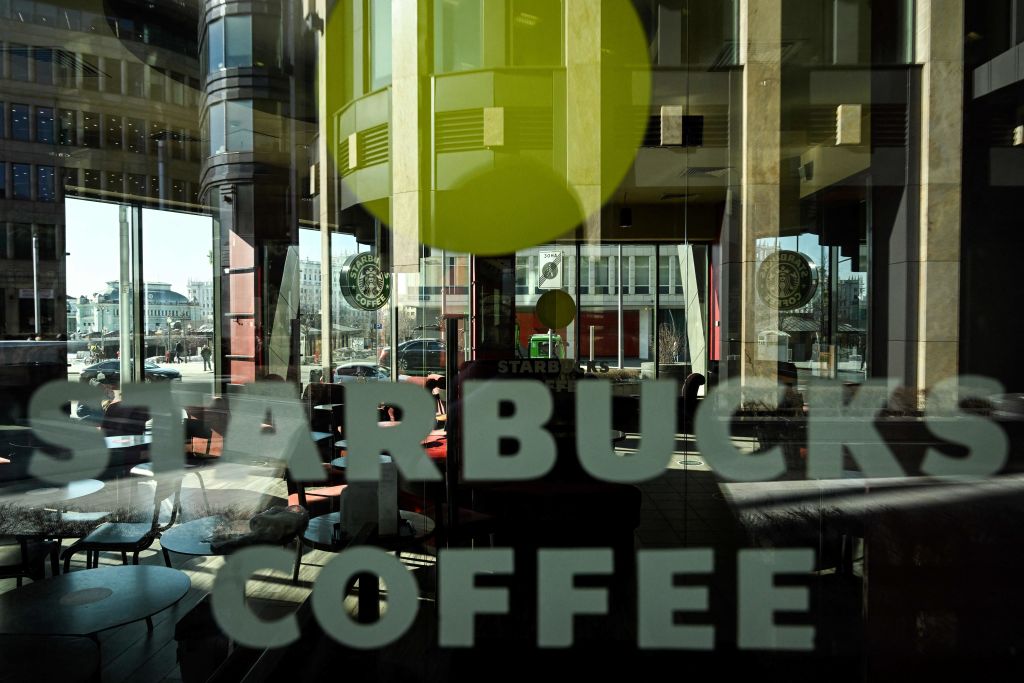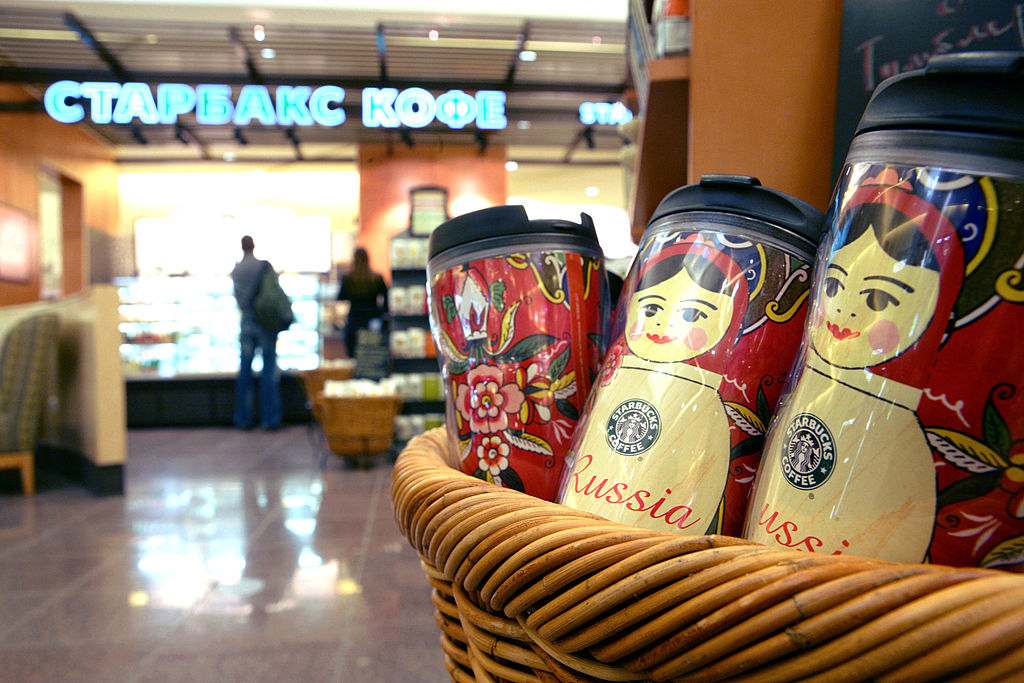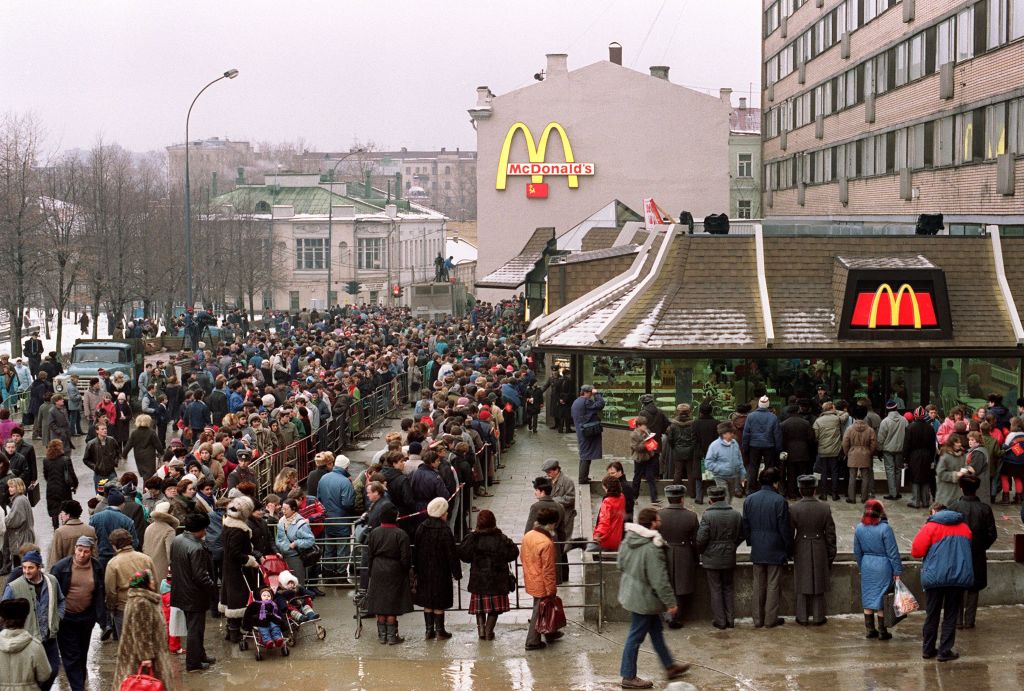
Starbucks joined McDonald’s in announcing a permanent end to its operations in Russia this week, having previously suspended trading in Russia in March. The news comes amid an exodus of Western businesses from Russia, including tech giant Apple and furniture retailer IKEA.
Following Russia’s invasion of Ukraine, Western businesses in Russia have been rushing towards the exit, symbolizing an end to decades of economic, political, and diplomatic cooperation between the nation and the West.
A month after the Russian invasion of Ukraine in February 2022, Starbucks and McDonald’s followed other major global brands in announcing a temporary closure of their businesses in Russia. In scenes reminiscent of the burger chain’s 1990 opening in the country, consumers rushed to McDonald’s restaurants to get a last meal before the closures, despite freezing winter temperatures.
According to CNN, the temporary closure in both Russia and Ukraine cost McDonald’s $127 million, including $100 million for disposed food and inventory, and $27 million to cover staff costs and payments for leases and supplies. The closures affected McDonald’s net income, which fell 28% in the first three months of the year.
On May 16, the company announced that the temporary closure of its restaurants in Russia would be made permanent. “The humanitarian crisis caused by the war in Ukraine, and the precipitating unpredictable operating environment, have led McDonald’s to conclude that continued ownership of the business in Russia is no longer tenable, nor is it consistent with McDonald’s values,” the company said in a statement.
The company later found a buyer in Russian businessman Alexander Govor, who already operated 25 of McDonald’s outlets in Siberia. The nearly 850 Russian restaurants will operate under a new name, staffed by the same 62,000 employees. McDonald’s has been busy taking down all golden arches and related branding atop its restaurants—in a process it calls “de-Arching”.
A week later, Starbucks followed in McDonald’s footsteps, announcing its decision to “exit and no longer have a brand presence in the [Russian] market”. The cafe chain said in a statement that it would continue to pay its 2,000 employees’ salaries for six months.

Symbols of American capitalism
The path for Seattle-based Starbucks to enter Russia in 2007 was laid by pioneer McDonald’s, which opened its first ever store in Moscow’s Pushkin Square in what was then the Soviet Union in 1990. Hundreds of people queued to make their first ever order at the burger chain, where a Big Mac—or Bolshoi Mak locally—cost 3.85 rubles, the equivalent of two and half hours work for an average earner in the country.
The Chicago-based restaurant chain’s entry into the Soviet Union, nearly two years before the fall of the communist state in December 1991, was anything but straightforward and reportedly followed 14 years of tortuous negotiations. According to the Washington Post, the company invested $35 million in a meat-processing, dairy, and bakery plant outside Moscow whose sinister façade earned it the name “McGulag” among visitors.
The arrival of McDonald’s—an iconic symbol of American capitalism—in the Soviet Union was emblematic of a wider thaw in Soviet-American tensions. After assuming the role of Soviet leader in 1985, Mikhail Gorbachev began an unprecedented process of transformation in the country, involving democratizing the political system, lifting restrictions on freedom of expression, and partly decentralizing the economy.

Most famously, he cultivated cooperative relationships with Western rivals, signing the historic Intermediate-Range Nuclear Forces Treaty with U.S. President Ronald Regan in 1987 and withdrawing Soviet troops from Afghanistan in 1988 to 1989. Over the following years, Gorbachev oversaw the fall of unpopular communist regimes in the Soviet bloc, and the ultimate dissolution of the Soviet Union in 1991.
During the following 32 years of its presence in Russia, McDonald’s expanded to 847 restaurants employing 62,000 people. Following the fall of the Soviet Union in 1991 and the country’s rejection of communist economic policies, other Western businesses thrived in Russia. Apple, Nike, Starbucks, and Coca Cola all flocked to Russia to cater to new consumers.
Starbucks, which opened its first ever coffee shop in Russia in September 2007, expanded to 130 locations and employed 2,000 members of staff in the country. The stores were operated by a licensee, and accounted for less than 1% of the company’s annual global revenue.
According to Reuters, before the outbreak of the war in Ukraine, McDonald’s stores in both Russia and Ukraine were generating roughly $310 million annually.
More Must-Reads From TIME
- The 100 Most Influential People of 2024
- The Revolution of Yulia Navalnaya
- 6 Compliments That Land Every Time
- What's the Deal With the Bitcoin Halving?
- If You're Dating Right Now , You're Brave: Column
- The AI That Could Heal a Divided Internet
- Fallout Is a Brilliant Model for the Future of Video Game Adaptations
- Want Weekly Recs on What to Watch, Read, and More? Sign Up for Worth Your Time
Contact us at letters@time.com